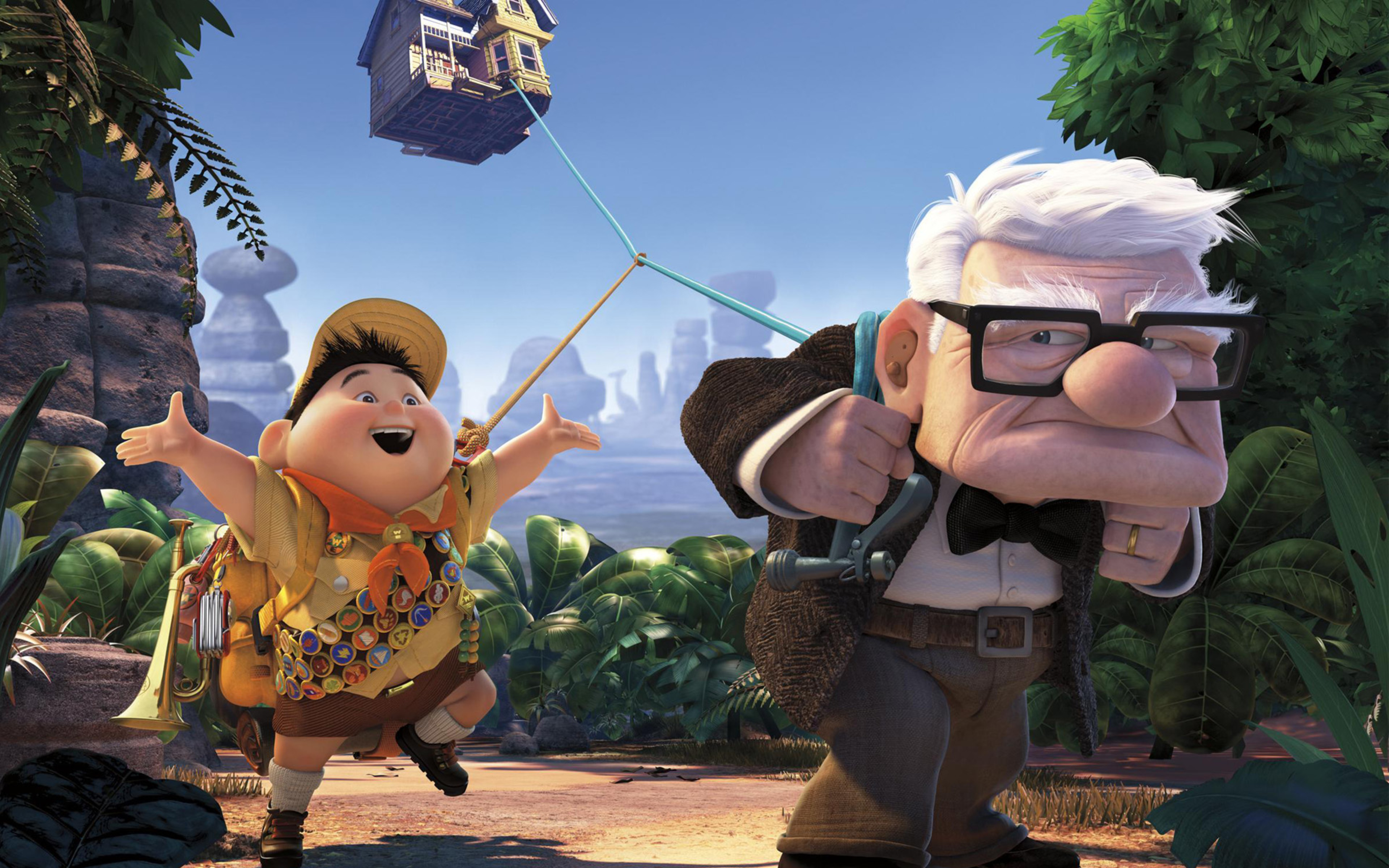In another moment of Disney–Pixar’s magic, Pixar’s first film to be presented in Disney Digital 3D, Up (2009), is the story of 78-year-old Carl Fredricksen who decides to travel to “Paradise Falls” in his own house that has been fully equipped with thousands of helium balloons. In a magical scene, the house takes off and the old man starts his journey up in the air!
As a kid, inspired by their childhood idol the explorer Charles Muntz, Carl and his friend Ellie have dreamed to travel to Paradise Falls, to explore the great wilds of South America. Many years later, the friends’ dream lives, even after their marriage; sadly though, Ellie dies before fulfilling the dream. Thus, Carl resolves to complete the promise made to his late wife, by turning his house into a makeshift airship to visit Paradise Falls.
Carl, 78-year-old—whose character design has a square-ish appearance to symbolize his containment within the house—along with an accidental stowaway, an eight-year-old scout named Russell—who looks round like a balloon—start their journey in the floating house.
The familiarity of the story and the relatable emotions has put Up in a believable world, which is familiar to the audience although it is set in a fantastic place. The deployment of physics in the movie made the scenes of the floating house plausible.

A technical director advised that the house requires 23 million balloons based on calculations such as the size and mass of the house, and the size of each balloon. However, Director Pete Docter realized that it would be impossible to have that huge number on the screen, as they would look like small dots. Instead, balloons that look twice Carl’s size were created.
At the moment Carl releases the balloons from the chimney, the house starts to fly; assuming that all the balloons have been inflated throughout the night and stored inside the house. In the lift-off scenes, 20,622 balloons appear; in the flying house shots 10,927 balloons appear, and there are a varying number in other scenes.
Inspired by the movie, a team from National Geographic thought how hard it can be to execute this far-fetched idea. In an episode entitled “A House in Flight” within the National Geographic TV series “How Hard Can It Be?”, in 2011, the team built a house to turn that magical scene of the flying house into reality. In the California desert, scientists, engineers, two balloon pilots, and dozens of volunteers worked on this project.
In order to build the airborne house, they used 300 helium-filled weather balloons. Each balloon was eight-foot-high and filled with a whole tank of helium.
The team did not use a real house, as stated by the Executive Director Ben Bowie: “We found that it is actually close to impossible to fly a real house”. Instead, they used a costume-built light-weight house that could carry people on board safely; the dimensions of the small-sized house were 4.8 m x 4.8 m x 5.5 m. Just like the film, the small house, carrying people inside, reached 10,000 feet into the air and flew for more than an hour over the Desert.
You can watch “A House in Flight” here
If you have not watched Up yet, you may watch the official trailer:
Animation gives us the ability to bring any concept to life with ease, regardless of its complexity or fantasticality; it allows you to slide scales and bend the laws of nature. That magic of animated films inspired the National Geographic channel team, who successfully mimicked Up; they proved that science too can give rationale to everything practically impossible in real life.
References
wired.com
imdb.com
dailymail.co.uk
telegraph.co.uk